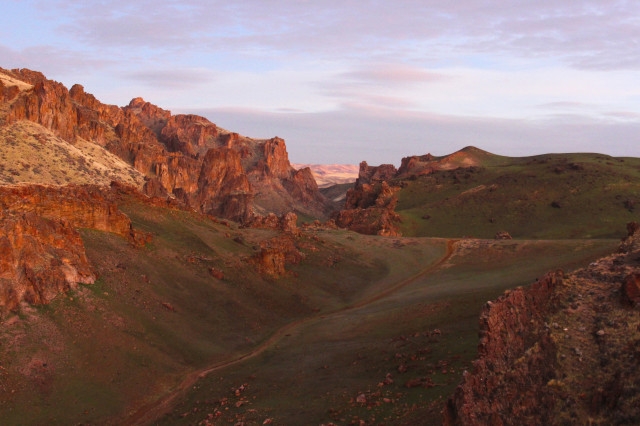National monument proposal sparks another debate over federal lands in Eastern Oregon
Should President Obama designate Owyhee Canyonlands a national monument? Conservationists have been talking for decades about the the need for a federally protected wilderness area in this remote Eastern Oregon region. But now that Obama might designate the 2.5 million acres of wild lands and rivers as a national monument, the issue has become more heated.
Obama does not need local or Congressional support, the Oregon House held a hearing last week to discuss the proposal. Public testimony was split between those who fear the designation will limit grazing — and disrupt the rural economies as a result — and supporting seeking federal land protections for the Canyonlands.
An Oregon Business poll found readers were also divided — 54% thought the president should declare the national monument; 46% voted against. Rep. Cliff Bentz, R-Ontario, who represents the Owyhee area, said at the hearing May 23 the area is already protected via wilderness area study designations, and that adding a federal designation could draw additional — apparently unwanted — visitors.
“Why would we stamp the word monument all over this, so that we can suck a whole bunch more people into that?” Bentz said, according to the public record. Ranchers, including Elias Eiguren from Jordan Valley, joined Bentz in speaking against the proposal. “We see it as a rash and somewhat of a belligerent move to force a monument in this area,” Eiguren said.
Potential limits on grazing rights are a concern for rancheres, he said, as is the potential for environmental lawsuits. Malheur County Sheriff Brian Wolfe speculated on spillover impacts if grazing were reduced: increased wildfires and reduced economic output.
“The very heart of our community is at stake,” Wolfe said.
He said that a national monument designation comes at a bad time, just months after a standoff at the Malheur National Wildlife Refuge.
“We are still working through what happened,” he said. “I’ve never felt tension like this before.”
What’s the benefit?
Those in favor of creating a national movement, argue that while some environmental protections are in place, those assurances are not permanent.
Existing protections, for example, do not address mining, transmission lines and oil and gas development.
Brent Fenty, executive director of the Oregon Natural Desert Association, said this is the intent of a national monument — not eliminating grazing as opponents argue.
In his testimony, Fenty compared the situation to an engagement that hasn’t led to a wedding.
“We have not made a commitment to holding this landscape together,” he said. A designation could also bring tourism to the region. “Protecting a place literally puts it on a map,” Fenty said.
The Owyhee Canyonlands proposal — as yet still a proposal — is yet another example of Oregon’s urban/rural divide.
As polls indicate, urban Oregonians tend to value the conservation potential associated with federal land protection, while rural residents fear the economic impact of a designated monument.






